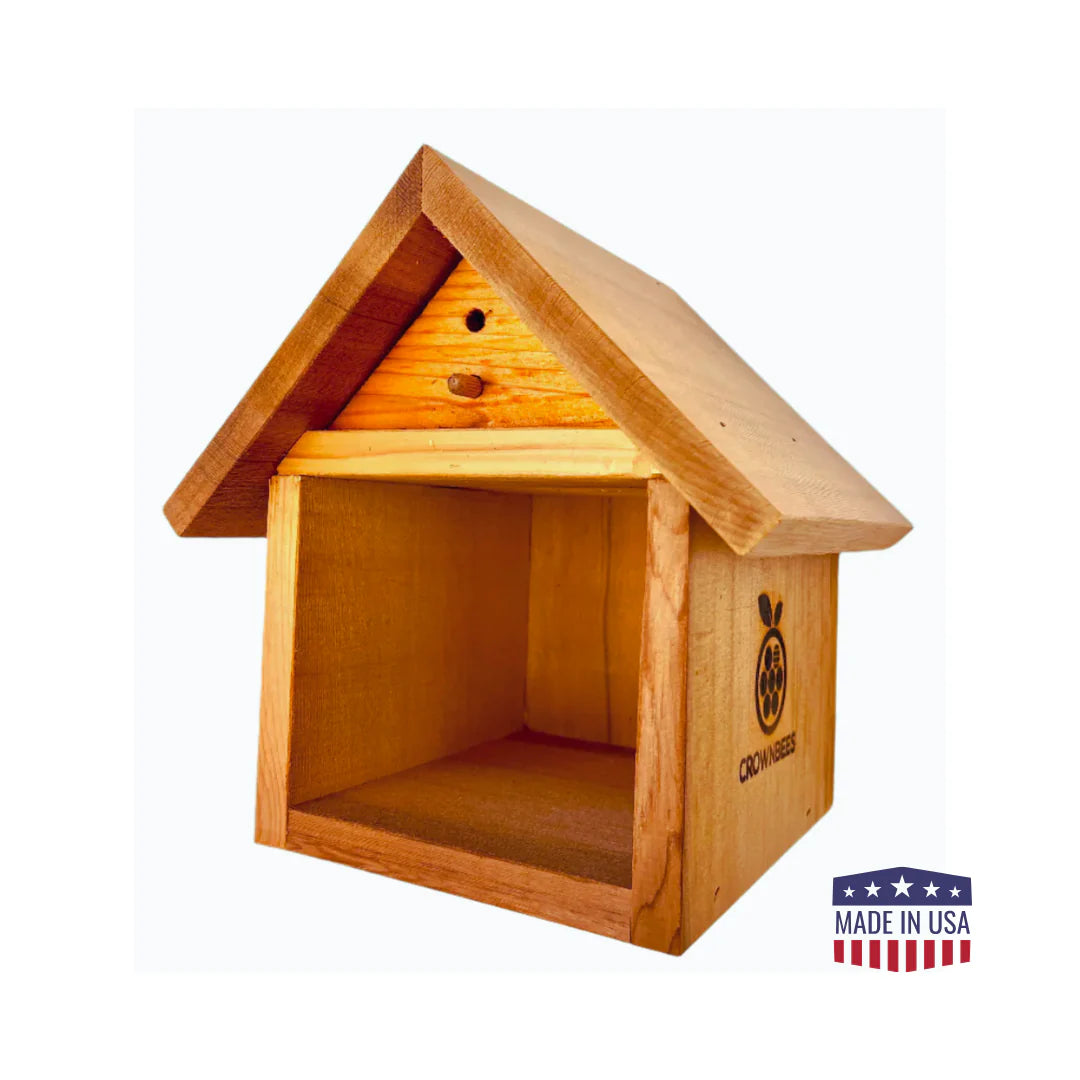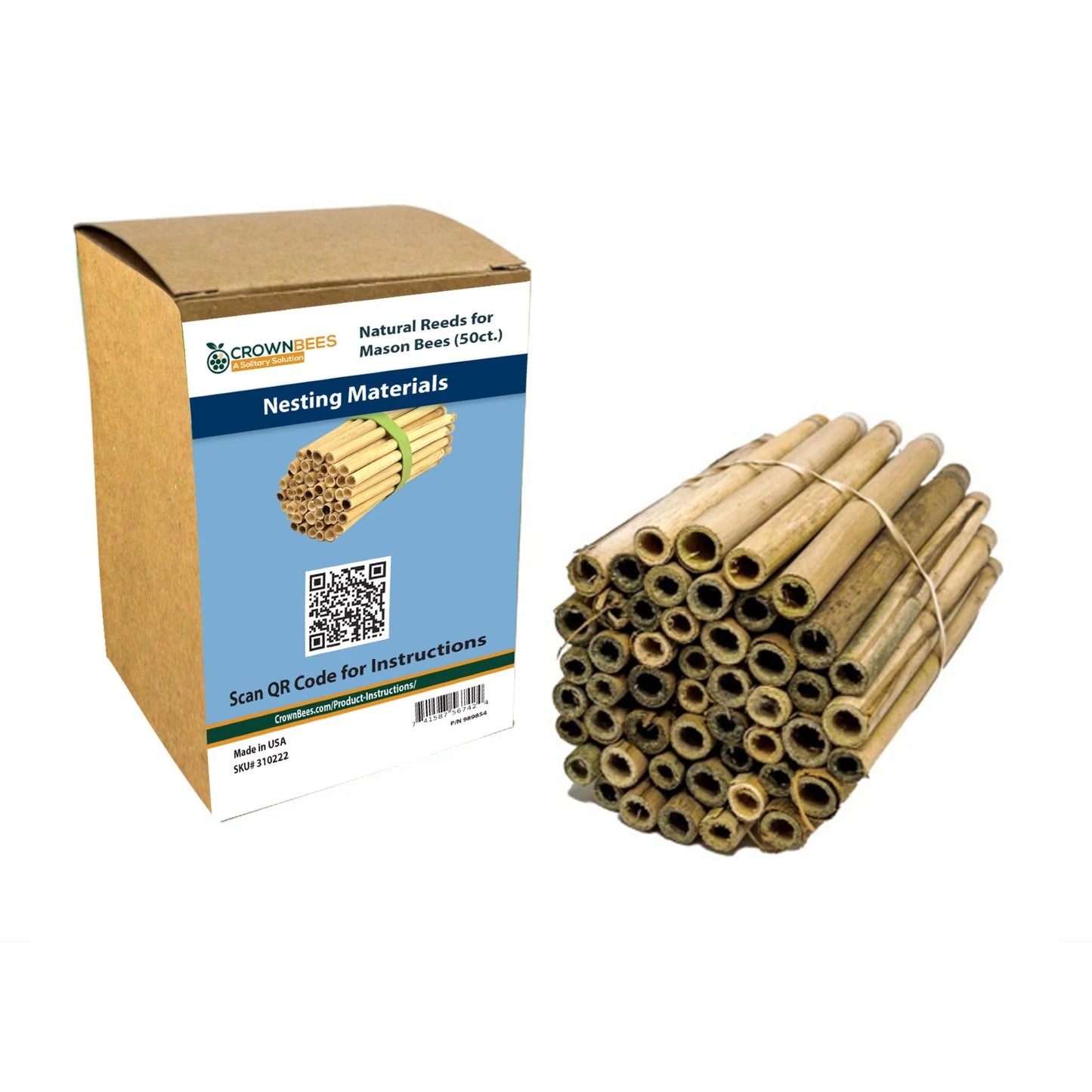
Many of our bee raisers ask us what they should plant in their lawns and gardens to help the bees and other native pollinators thrive. The short answer is that you'll want to provide a diversity of native flowering plants that bloom continuously across the entire growing season.
But, to learn why native plants are so important for our pollinators and which native plants to plant in your ecoregion requires a more extended response.
Native plants have evolved over hundreds or thousands of years in particular regions or ecosystems. In the United States, only plants found in this country before European settlement are considered native. Native plants include the ferns, grasses, perennial and annual wildflowers, woody trees, shrubs, and vines that covered our diverse landscapes when the first settlers came.
Native plants provide numerous benefits:
● Native plants provide nectar, pollen, and seeds that serve as food for native insects, birds, and other animals. Non-natives do not always provide the necessary nutrients for our native animals to thrive.
● Native plants can help you save money and water. Since native plants are adapted to local soils and climates, they don't require as much water and fertilizer as non-natives. Additionally, the deep roots of many Midwestern plants increase the soil's capacity to store water, which is essential for reducing water runoff and preventing erosion.
● Native plants are often more resistant to insects and diseases, so they are less likely to need chemical or pesticide treatments. Eliminating chemicals creates a healthy habitat for wild bees and other animals.
● Flowers in spring and summer, brilliant fall colors, and unique bark patterns, native plants give four seasons of beauty.
Unfortunately, the native plant species in North America are disappearing at an alarming rate due to land degradation, agribusiness, and chemical use. To add to this problem, many landscapers, gardeners, and nurseries have replaced native plants with showy non-natives, negatively affecting our native insect and bird populations.
Fortunately, there are many resources to help you create native habitats that attract native wildlife and promote biodiversity. We've compiled a list of our favorites to help you identify the best native plants for your region and act as your guide to incorporating native plants in your lawn and garden.

Lawn or Garden Assessment
Assessing your property is the first step in creating a new garden or landscape - or giving your existing one a makeover. This step is important because each area has a unique set of conditions. Think about the timeless principle of right plant, right place. All plants have specific growing requirements and will struggle to survive if planted in the wrong place. You'll want to consider environmental conditions (sunny or shady, soil types, irrigation methods, etc.), existing native and non-native plants, proximity to neighbors, and decide the best uses for your yard based on personal preferences. Your assessment doesn't have to be super elaborate. However, the more you know about your land ahead of time, the easier it will be to select plants that will thrive in that specific environment.
Pro Tip: If you are looking for detailed step-by-step instructions for assessing your property, Charles P. Mazza published a user-friendly guide full of assessment activities that you can perform at home. Many of which are also great mini-ecology lessons for kids!

Identify and Remove Invasive Non-Native Species
While we are not suggesting you remove all non-native species at once from your lawn and garden, invasive species should ALWAYS be removed as soon as they appear. When invasive non-natives establish themselves in our local ecosystems, they outcompete native species that have evolved specifically to live there.
Some invasive species, such as Japanese Honeysuckle and Periwinkle, are still sold at nurseries because of their ornamental value. It's important to watch out for them the next time you visit your local garden center or plant nursery.
Two excellent resources to help you identify common invasive species in your area are The National Invasive Species Information Center and The Center for Invasive Species and Ecosystem Health. Both sites provide regional information on all species deemed potentially harmful to the economy, environment, or human health.
If you identify invasive species in your lawn or garden, you can usually pull or dig them out. Just make sure you remove as much of the root system as possible, as even a tiny portion can restart the infestation. If the problem persists, you may need to try a more laborious control method.

How To Choose Plants
Now for the fun part - picking out the best native plants for your lawn and garden!
You'll want to plant a selection of flowering plants, grasses, trees (if you have space), and shrubs to provide pollen and nectar, as well as other wildlife benefits throughout the seasons. Make sure you use the assessment you performed earlier and choose plants native to your region that will grow and thrive in your unique conditions.
There are a wealth of resources aimed at helping you learn more about native plant gardening. The following are a few of our favorites:
● Our friends over at Pollinator Partnership have created regionally specific Native Pollinator Garden Recipe Cards and Ecoregional Planting Guides to help you build beautiful native gardens that will attract pollinators.
● Contact your Native Plant Society. These organizations promote the preservation, conservation, and knowledge of native plants. The USDA has created an alphabetical list of states to help you quickly navigate to your area.
● The Native Plant Trust hosts a wide range of classes to help you learn how to garden with native plants.
● The Xerces Society has prepared lists of recommended native plants that are attractive to pollinators, such as native bees, butterflies, moths, and hummingbirds, and are great for backyard gardens, urban greenspaces, and school and community gardens
● The National Wildlife Federation has a Native Plant Finder database that allows gardeners to search by zip code to find native plants that host high numbers of pollinator species.
● Take your garden to the next level with The Ecological Gardener. This book by Matt Rees-Warren gives you the tools to create an abundant, healthy garden from the soil up―a garden that welcomes birds and bees and allows native planting and wild flowers to flourish, with minimal carbon impact or need for fresh water.
Pro Tip for Pet Owners: Once you've picked out your favorite native plants, check to see if any of them are toxic to your furry family members. Did you know the native Common Milkweed is toxic to dogs if they eat it?

Where To Find Native Plants
Finding native plants to purchase can be a challenge at times. As the popularity of native plants has grown, it is easier to find a small selection of native plants at garden centers and nurseries. However, more often than not, nurseries are retail outlets, not plant growers. And remember, DO NOT take native plants from the wild as this threatens their populations and disrupts the ecosystem.
Consider the following tips when searching for native plants:
● If possible, seek out a nursery that propagates and grows the plants they sell. Or, if you're ambitious, start your own plant nursery!
● Bring a list of the plants you are looking for when visiting the garden center or plant nursery.
● Ask the nursery staff where the plants were grown. Were they grown locally or purchased from somewhere else (and if so, where)? Also, ask if they have been treated with pesticides, particularly neonicotinoids. These chemicals are absorbed into the plant and can kill the insects that feed on them.
● Ask the nursery staff if the plants are true natives or hybrid natives. Common examples include echinacea or coneflower. There are ten distinct native coneflower species, but the horticultural industry has created countless hybrids. Knowing the difference between native and hybrid is important because while hybrids are often showy, the jury is still out on whether they are beneficial to pollinators and genetic diversity. You can identify the hybrids by looking at their names. They are named using the scientific name (Latin genus and species, such as Echinacea purpurea) plus the cultivar name, the third word in single quotation marks (such as Echinace purpurea 'Avalanche').
● If the nursery offers woodland wildflowers or ferns, ask if they were nursery propagated. These slow-growing species are still commonly taken from the wild and sold to nurseries. Ask how they were propagated, and if they can't tell you, do not purchase these plants from that vendor.
Pro Tip: If you have a favorite plant that you can't find, be sure to ask your local nursery to consider adding it to their stock.

Above Image: Hybrid, Echinace purpurea ‘Avalanche’
Once you begin to explore and experiment with native plants, you'll soon discover that many of the benefits go beyond just sprucing up your yard. Native plants will eventually reduce your gardening costs while creating healthy wildlife habitat. However, increasing the supply of locally and responsibly propagated native plants will require us to be persistent with our requests. Let's show our growers (and our bees) that we want our lawns and gardens filled with genetically diverse native plants that support our native animal populations.


